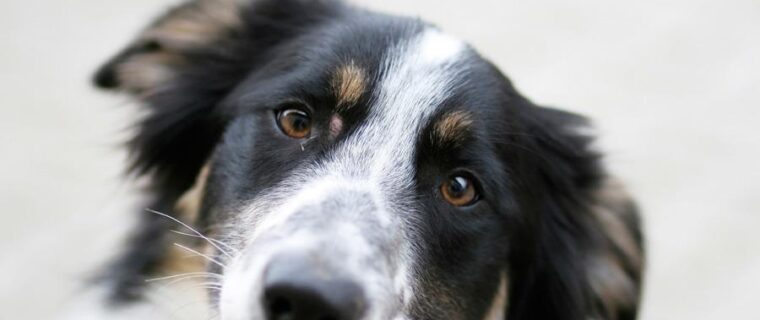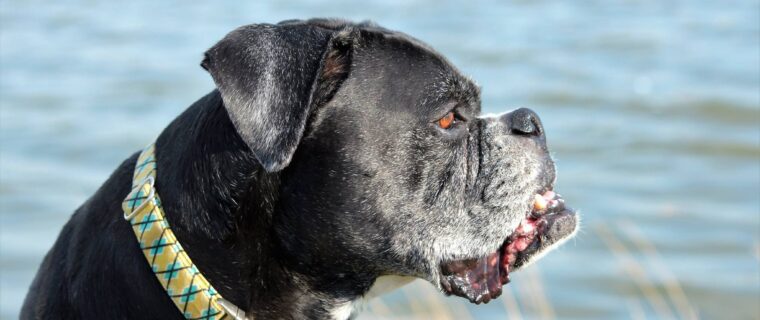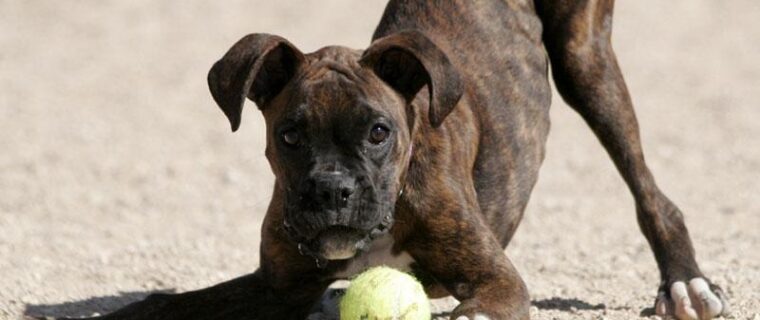Category Archives: Medical Library
Home » Archive by category "Medical Library" (Page %s 2)
Atlanto-axial (A-A) instability
- Apr, 22, 2016
- DVSC
- Medical Library
- Comments Off on Atlanto-axial (A-A) instability
Atlanto-axial (A-A) instability is generally seen in juvenile toy breeds due to congenital malformation or absence of the dens and/or associated ligamentous structures. A-A instability is occasionally seen in other breeds due to trauma. Patients will often present with neck pain, weakness and occasionally paralysis. Surgical stabilization of the A-A articulation is the treatment of […]
Read MoreCoxofemoral (Hip) Luxation
- Apr, 21, 2016
- DVSC
- Medical Library
- Comments Off on Coxofemoral (Hip) Luxation
The hip is the articulation between the femur (thigh bone) and the pelvis. It is considered a “ball-and-socket” joint in which the “ball” is the head of the femur and the “socket” is the acetabulum of the pelvis. Coxofemoral luxation occurs when the head of the femur becomes luxated (dislocated) from the acetabulum. Below is […]
Read MoreCranial Cruciate Ligament (CCL) Overview
- Apr, 20, 2016
- DVSC
- Medical Library
- Comments Off on Cranial Cruciate Ligament (CCL) Overview
What is a cruciate tear? Canine cranial cruciate ligament (CCL) disease is the most common orthopedic injury seen in dogs. You may hear veterinarians refer to this injury as an “ACL tear,” which is an adaptation from human orthopedics, but the terms are often used interchangeably. The CCL is a ligament inside the knee that […]
Read MoreCranial Cruciate Ligament (CCL) – Extracapsular Repair
- Apr, 19, 2016
- DVSC
- Medical Library
- Comments Off on Cranial Cruciate Ligament (CCL) – Extracapsular Repair
Lateral fabellar suture, Tightrope, and Bone anchor procedures: Background Cranial cruciate ligament (CCL) disease is the most common orthopedic disease in dogs ( see CCL Overview Section ). The CCL is located inside the knee and functions to stabilize the knee during locomotion. Because the articular surface of the canine tibia (shin bone) is sloped backward, normal […]
Read MoreCranial Cruciate Ligament (CCL) – Tibial Plateau Leveling Osteotomy (TPLO)
- Apr, 18, 2016
- DVSC
- Medical Library
- Comments Off on Cranial Cruciate Ligament (CCL) – Tibial Plateau Leveling Osteotomy (TPLO)
Background Cranial cruciate ligament (CCL) disease is the most common orthopedic disease in dogs (see CCL overview section ). The CCL is located inside the knee and functions to stabilize the knee during locomotion. Because the articular surface of the canine tibia (shin bone) is sloped backward, normal locomotion leads to forward translation (tibial thrust) […]
Read MoreCranial Cruciate Ligament (CCL)-Tibial Tuberosity Advancement (TTA)
- Apr, 17, 2016
- DVSC
- Medical Library
- Comments Off on Cranial Cruciate Ligament (CCL)-Tibial Tuberosity Advancement (TTA)
Tibial Tuberosity Advancement (TTA) Background Cranial cruciate ligament (CCL) disease is the most common orthopedic disease in dogs (see CCL overview section) The CCL is located inside the knee and functions to stabilize the knee during locomotion. Because the articular surface of the canine tibia (shin bone) is sloped backward, normal locomotion leads to forward […]
Read MoreMandibulectomy and Maxillectomy
- Apr, 17, 2016
- DVSC
- Medical Library
- Comments Off on Mandibulectomy and Maxillectomy
Mandibulectomy and maxillectomy, removal of portions of the mandible and/or maxilla, are valuable procedures in treatment of oral neoplasms (cancers). The most common indication is for excision of benign or locally aggressive neoplasms, such as the epulides. Removal of malignant neoplasms, such as osteosarcoma, offers a more guarded prognosis, with increased chance for distant metastases. Tumors […]
Read MoreCutaneous Mast Cell Tumors
- Apr, 17, 2016
- DVSC
- Medical Library
- Comments Off on Cutaneous Mast Cell Tumors
Cutaneous mast cell tumors (MCT) are a common form of neoplasia(cancer) in the dog. Mast cells are normal immune system cells. The intracellular cytoplasmic granules contain heparin, histamine, platelet-activating factor, and eosinophilic chemotactic factor. The visual appearance of cutaneous MCT is variable; they can look like almost any lesion. MCT are generally easily diagnosed with […]
Read MoreDegenerative Myelopathy
- Apr, 15, 2016
- DVSC
- Medical Library
- Comments Off on Degenerative Myelopathy
Degenerative myelopathy is a slowly progressive neurologic disorder that is manifested as a rear limb weakness that will eventually cause rear limb paralysis. Degenerative myelopathy was first described in 1973 as a non-inflammatory primary axonal degeneration. This disease affects both the myelin surrounding the nerve fibers and the nerve fibers themselves. Myelin is a structure […]
Read MoreDiaphragmatic Hernia
- Apr, 14, 2016
- DVSC
- Medical Library
- Comments Off on Diaphragmatic Hernia
Traumatic diaphragmatic hernias Definition The diaphragm is a muscle made up of two parts, a strong central portion and a weaker outer portion. The diaphragm separates the abdominal cavity from the thoracic cavity. A diaphragmatic hernia (DH) occurs when the diaphragm is disrupted in a way such that abdominal organs can enter the thoracic cavity. […]
Read MoreSearch This Site
Medical Library Posts
- 25+ Years of Neurosurgery at the DVSC
- Anal Sac Adenocarcinoma
- Anal Sac Removal, Elective
- Arthritis
- Arthroscopy
- Atlanto-axial (A-A) instability
- Coxofemoral (Hip) Luxation
- Cranial Cruciate Ligament (CCL) Overview
- Cranial Cruciate Ligament (CCL) – Extracapsular Repair
- Cranial Cruciate Ligament (CCL) – Tibial Plateau Leveling Osteotomy (TPLO)
- Cranial Cruciate Ligament (CCL)-Tibial Tuberosity Advancement (TTA)
- Cutaneous Mast Cell Tumors
- Cystotomy and Scrotal Urethrostomy
- Degenerative Myelopathy
- Diaphragmatic Hernia
- Diskospondylitis
- Ear Canal Ablation and Bulla Osteotomy
- Elbow Dysplasia
- Epidural Analgesia
- Episioplasty
- Feline Perineal Urethrostomy
- Femoral Head Ostectomy (FHO)
- Fibrocartilaginous Embolism (FCE)
- Fibrocartilaginous Embolus in Schnauzers
- Fracture Healing by Biologic Osteosynthesis
- Fracture of the Radius and Ulna in Small breed dogs
- Fracture Repair by Circular External Skeletal Fixator (ESF)
- Gastric Dilatation-Volvulus (Bloat)
- Gastrointestinal Foreign Body
- Gastropexy, Elective
- Hip Dysplasia (Overview)
- Hip (Coxofemoral) Luxation
- Incontinence: Urethral Sphincter Mechanism Incompetence
- The Facts About Backs (IVDD)
- Intervertebral Disc Disease (IVDD) Percutaneous Laser Disc Ablation LDA
- Intervertebral Disc Disease (IVDD)- Care of a Paralyzed Pet
- Laryngeal Paralysis
- Lumbosacral Disease
- Mandibulectomy and Maxillectomy
- Medial Patellar Luxation (MPL)
- Microvascular Dysplasia Mimics Portosystemic Shunt
- Minimally Invasive Surgery in Soft Tissue Applications
- Neurosurgical Postoperative Physical Therapy
- Perianal Fistula Management in Dogs
- Perineal Hernias
- Peritoneopercardial Hernias in Dogs and Cats
- Portosystemic Shunts
- Sialocele (Salivary Mucocele)
- Spinal Fractures and Subluxations
- Splenectomy
- Total Hip Replacement
- Tracheal Collapse
- Triple Pelvic Osteotomy (TPO)
- Underwater Treadmill
- Updates in Fracture Management
- Urethral Prolapse
- Wobblers Disease









